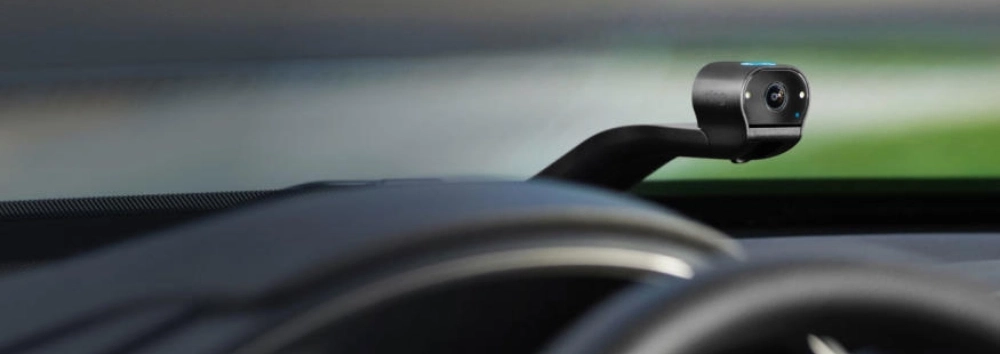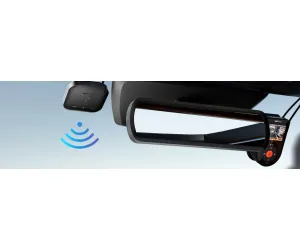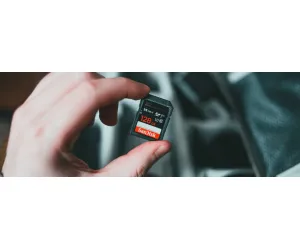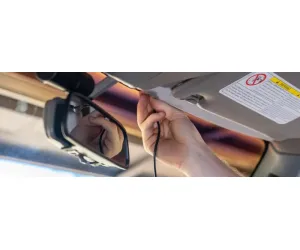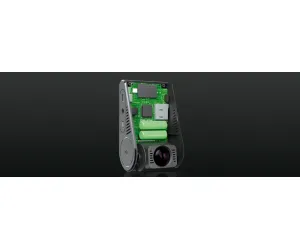With numerous options available, selecting the ideal dash cam can be overwhelming. To simplify your decision, here are 12 must-have features that ensure optimal security and recording performance for your vehicle.
1. High-Resolution Video Quality
A dash cam is only as good as the footage it captures. Opt for a camera with at least 1080p Full HD resolution to ensure clear and detailed recordings. Higher resolutions like 2K (1440p) and 4K (2160p) provide even sharper images, making it easier to read license plates and street signs, even from a distance.
If you frequently drive at night, ensure your dash cam has HDR (High Dynamic Range) or WDR (Wide Dynamic Range) technology to balance exposure and enhance details in bright or dark conditions.
2. Night Vision & Low-Light Performance
Driving at night or in dimly lit environments requires a dash cam with superior night vision capabilities. Look for a model with:
✅ Infrared (IR) sensors – Helpful for recording clear footage in pitch-dark conditions.
✅ Large aperture lens (f/1.8 or lower) – Allows more light for better clarity.
✅ Sony STARVIS sensor – One of the best low-light sensors for dash cams.
A high-quality night vision dash cam ensures your vehicle’s security even when parked overnight.
3. Wide-Angle Lens for Maximum Coverage
A wide field of view (FOV) ensures that your dash cam captures a broader perspective, reducing blind spots. A lens between 140° to 170° is ideal, as it records more of the road, sidewalks, and surroundings without excessive distortion.
This feature is especially useful for capturing multi-lane roads, intersections, and unexpected incidents occurring outside the immediate path of your vehicle.
4. Loop Recording & Auto Overwrite
Since dash cams record continuously, they require a loop recording feature that automatically overwrites old footage once the storage is full. This ensures uninterrupted recording without manual deletion.
If you drive frequently, consider using a high-endurance microSD card (128GB or higher) to store more footage before it starts overwriting.
5. G-Sensor & Impact Detection
A G-sensor (gravity sensor) is crucial for accident detection. It automatically detects sudden impacts, sharp turns, or hard braking and locks the recorded footage so it cannot be overwritten.
This feature is extremely useful for hit-and-run incidents, insurance claims, and accident evidence in case of disputes.
6. 24/7 Parking Mode
A dash cam with parking surveillance mode keeps your vehicle protected even when you’re away. It can automatically record if:
✅ Motion is detected around the car (motion-triggered recording).
✅ A collision occurs while parked (impact-triggered recording).
To enable 24/7 recording, you’ll need either a hardwired kit connected to the car’s battery or an external power source like a dash cam battery pack.
7. Built-in GPS for Location & Speed Tracking
A GPS-enabled dash cam tracks your vehicle’s location, speed, and route history. This feature is useful for:
✅ Providing location-based evidence in case of an accident.
✅ Monitoring driving speed (helpful for fleet management).
✅ Keeping track of long road trips with detailed route history.
For professional drivers, rideshare operators, or businesses managing multiple vehicles, GPS tracking is an essential feature.
8. Wi-Fi & Mobile App Connectivity
Dash cams with built-in Wi-Fi allow you to easily transfer and view recorded footage on your smartphone via a mobile app. This eliminates the hassle of removing the SD card every time you need to access videos.
Some premium models even offer cloud storage, ensuring your footage is backed up online for added security.
9. Dual-Channel (Front & Rear) Cameras
For maximum security, a dual-channel dash cam records both the front and rear of your vehicle. This provides:
✅ Front and rear accident documentation (useful for rear-end collisions).
✅ Protection against tailgating or reckless drivers.
✅ Better parking surveillance with a rear camera capturing possible incidents behind your car.
Some dash cams even offer interior cameras, which are useful for rideshare drivers (Uber, Lyft, etc.) or monitoring passengers inside the vehicle.
10. Cloud Storage & Remote Access
Some advanced dash cams offer cloud connectivity, allowing you to access footage remotely from anywhere. This is especially useful for:
✅ Fleet management – Track multiple vehicles remotely.
✅ Stolen vehicle cases – View live footage and retrieve evidence.
✅ Automatic emergency alerts – Get notifications if an impact or collision is detected.
11. Battery Backup or Super Capacitor
Dash cams are usually powered by the car’s battery, but in case of an accident or sudden power loss, a super capacitor or built-in battery ensures that crucial footage is saved before shutdown.
Super capacitors are better suited for hot climates, as they are more durable than lithium-ion batteries and can withstand extreme temperatures.
12. AI-Powered Smart Features
Modern dash cams come with AI-powered safety alerts, such as:
✅ Lane Departure Warning System (LDWS) – Alerts when you drift out of your lane.
✅ Forward Collision Warning System (FCWS) – Detects potential front-end collisions.
✅ Driver Fatigue Alert – Reminds you to take breaks on long drives.
These smart features improve overall driving safety and reduce accident risks.
Final Thoughts
Choosing a feature-rich dash cam is an investment in safety and security. Whether for personal use, fleet management, or rideshare driving, a high-quality dash cam with the right features ensures clear evidence, accident documentation, and peace of mind.
FAQs About Dash Cams
1. Are dash cams legal in Saudi Arabia?
Yes, dash cams are legal in Saudi Arabia for personal use. However, you should ensure that your recordings comply with privacy laws and local regulations.
2. Can dash cams record while the car is off?
Yes, dash cams with parking mode can record even when the car is off. However, they require hardwiring or an external battery for continuous operation.
3. How long can a dash cam record before it overwrites?
The recording time depends on the storage capacity and video resolution. A 128GB SD card can store approximately 10-12 hours of 1080p footage before loop recording begins overwriting old files.
4. Do all dash cams record sound?
Most dash cams have built-in microphones for audio recording, but this feature can be turned off for privacy.
5. Can I access my dash cam footage remotely?
Yes, if your dash cam supports Wi-Fi, cloud storage, or mobile app connectivity, you can access footage remotely.



